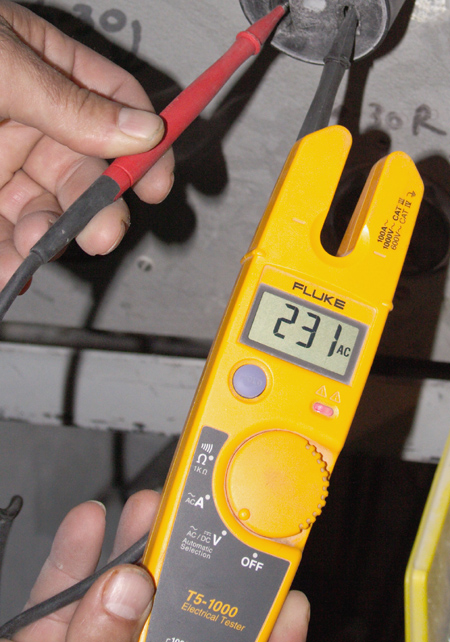 |
|
|
Kiln Pointers
|
|
|
The Kiln That Wouldn’t Reach Temperature |
CONTENTS The Kiln That Wouldn’t Reach Temperature Recent Q&As: Will firing a 240 volt kiln on a 208 volt circuit harm the kiln? Memorable Quote ----------- THE KILN THAT WOULDN’T REACH TEMPERATURE A potter named Ray contacted me to find out why his friend’s Paragon TnF-82-3 couldn’t reach 1900F (1037C). The kiln is rated to 2350F (1287C). Ray test-fired the kiln seven times to solve this mystery. At first Ray thought the elements in the center section of the top-loading kiln were worn out, because while the top and bottom elements glowed bright orange, the center ones were a dull red. The center elements of this model are designed to fire cooler than the top and bottom, I explained, so that was normal. The kiln was fired at the friend’s studio, where the voltage was 220. “I saw on Paragon’s website that there is a 220 volt model,” Ray said. I explained that while most of Europe uses 220 volts, it is not standard in the U.S. We have 240 volts here. In the U.S., appliances rated to 220 volts can operate on either 208 or 240 volts, but we don’t actually have 220 volts. “220 is unusually low voltage,” I told Ray. After the fourth test firing Ray said, “I have a spare thermocouple, so I will put that one in since it's an easy replacement. I will test the thermocouple with an ohmmeter.” A new thermocouple was installed, but that had no effect on the firings. Ray moved the kiln to his own studio, where the voltage was a full 240. The kiln reached 2200F (1204C) in five hours. “Ray, when the kiln was fired on 220 volts, I'm surprised that it even reached 1800. 220 is very low for a 240 volt circuit.” “Thanks for the guidance to focus on the voltage,” Ray said. “I was not aware that 220 vs 240 volts would make such a difference.” If your kiln is slowing down this summer, do not assume that it is due to worn elements. The voltage at your studio may be low due to peak electrical demand. If so, try firing your kiln when electrical demand is lower. ----------- RECENT Q&As Q. Arnold, I've discovered that I'm running my 240 volt kiln on 208 volts and not 240 as I thought I had. The kiln is struggling to reach cone 6. I wonder, am I harming the kiln? Can I replace the 240 volt elements with 208 volt elements? And, if so, should I replace them immediately or wait until my present elements fail? A. You can replace the 240 volt elements with 208 volt. This will raise the amperage of your kiln to 52, which means you will have to direct-wire the kiln. When you install 208 volt elements, the kiln's electrical data plate should be changed to show 208 volts so the correct elements are ordered in the future. You are not harming the kiln by running 240 volt elements on 208 volts. However, the elements will fail prematurely. To save firing time, I would replace the elements soon. If you were fusing or sagging glass, which fire to much lower temperatures than pottery, your 240 volt elements might last longer on 208 volts than they would on 240 volts. But the elements are struggling to reach cone 6 on 208 volts, so they are wearing rapidly. ----------- MEMORABLE QUOTE "The secret to getting ahead is getting started. The secret to getting started is breaking your complex, overwhelming tasks into small, manageable tasks and then starting on the first one." --Mark Twain ----------- A BlueBird XL glass kiln is clicking in my office. Shelia and I tested a new heating element, which has improved the firing speed of the kiln. For those who work in a kiln factory, it is easy to forget that kilns get hotter than lava as it erupts from a volcano. They get hotter than inside the engine cylinders of your car, and hot enough to melt copper. Magic happens inside kilns. Thank you, With best wishes, Arnold Howard Paragon Industries, L.P. – Better Designed Kilns 2011 South Town East Blvd., Mesquite, Texas 75149-1122 Voice: 972-288-7557 & 800-876-4328 / Fax: 972-222-0646 / ahoward@paragonweb.com / www.paragonweb.com / www.facebook.com/paragonkilns PRIVACY NOTICE: Under no circumstance do we share or sell your email address. Copyright 2017, by Paragon Industries, L.P. |
|
|

|
|
|
|
|
“Custom and standard Kilns and Industrial Furnaces for ceramics, pottery, heat treating, enameling, |
||||
